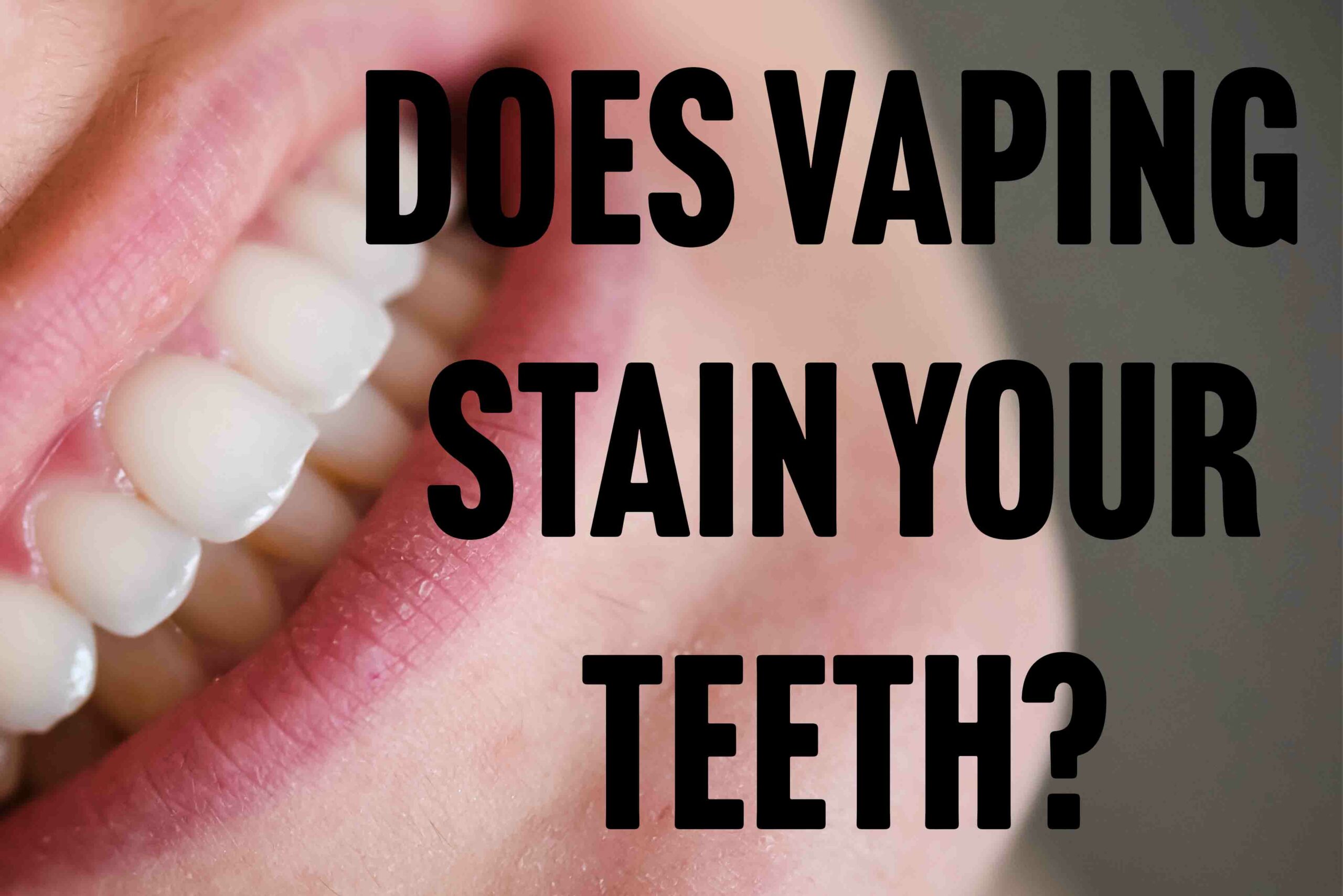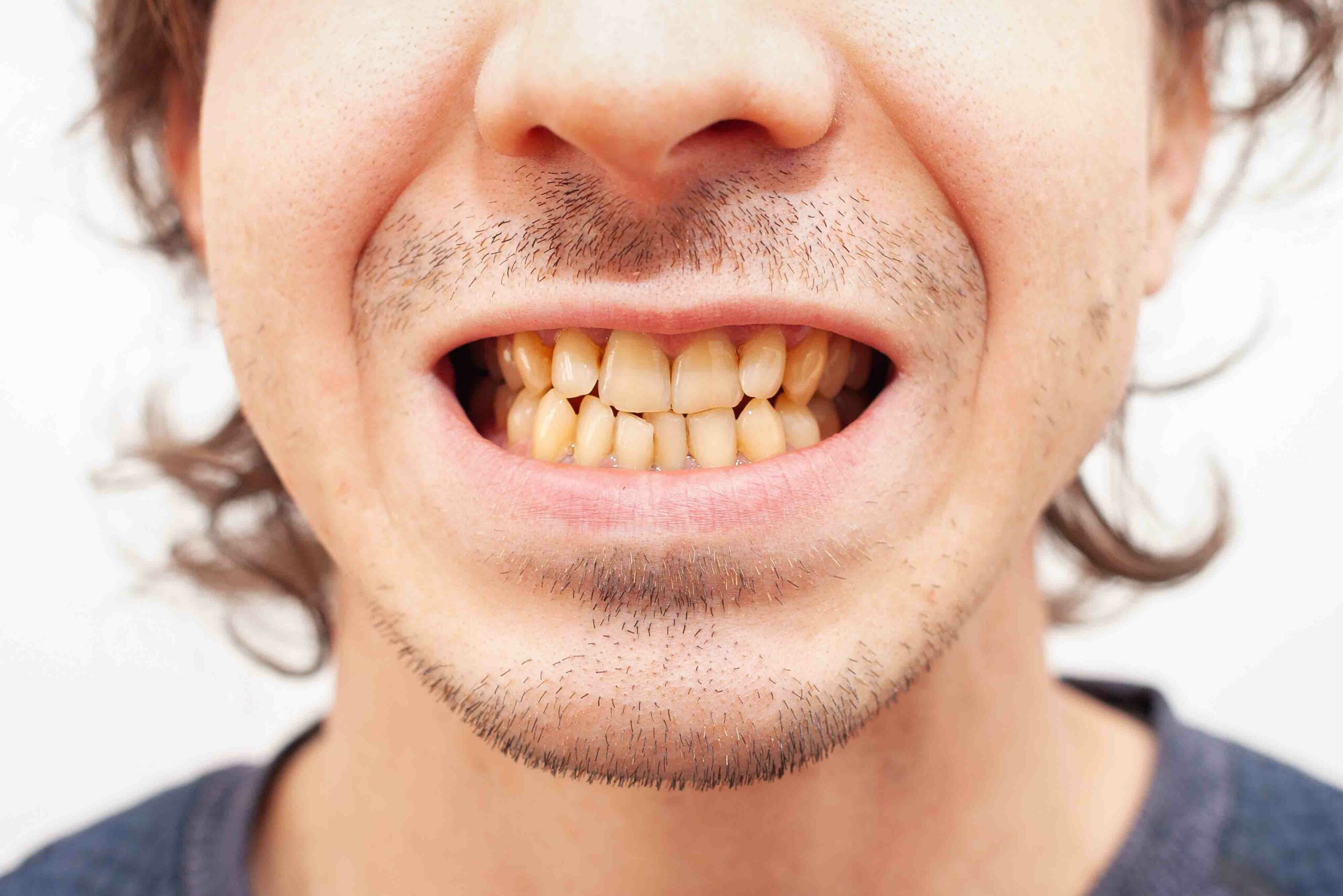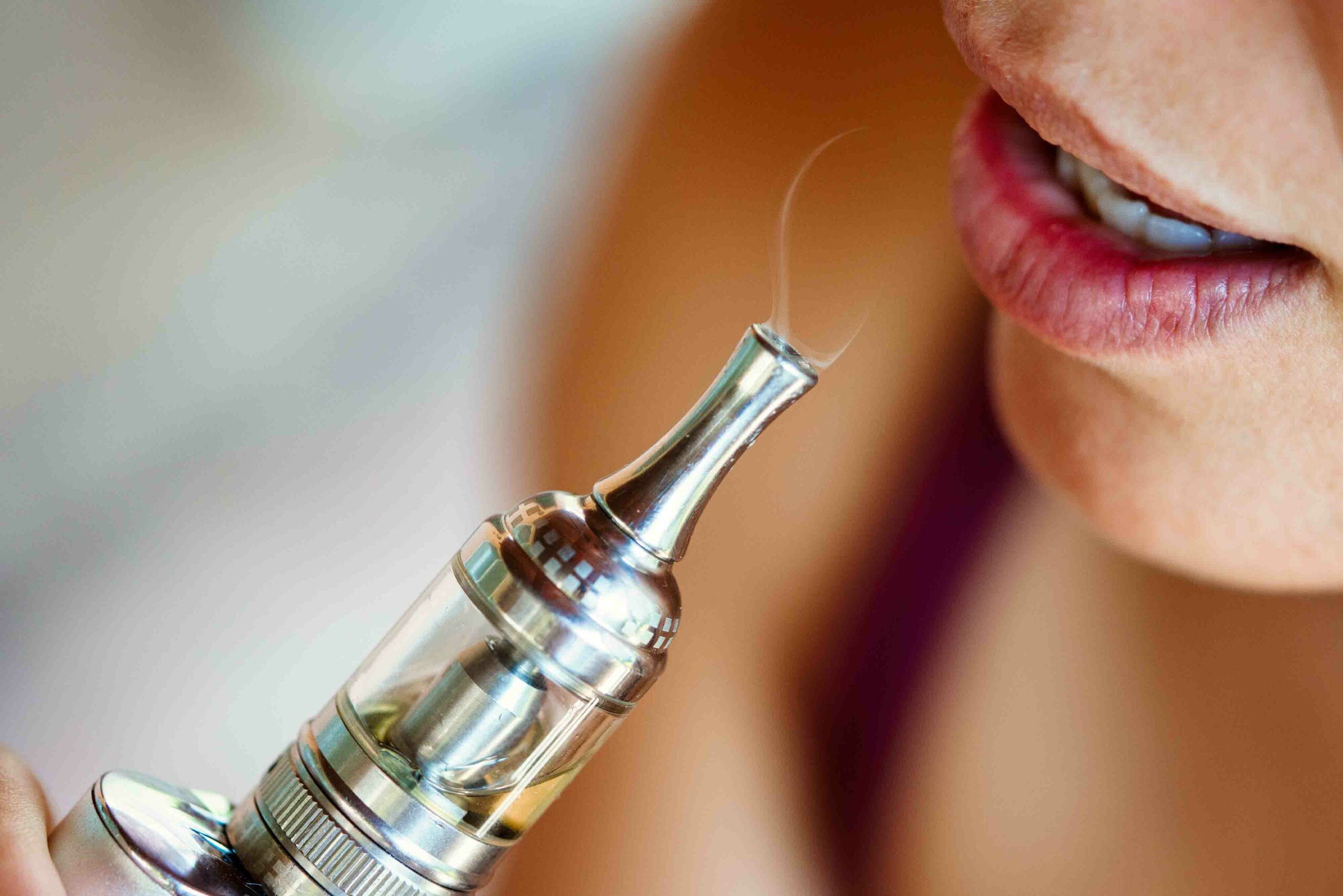As the shift from traditional smoking to vaping continues to gain momentum, many individuals are increasingly curious about the potential health implications associated with this modern alternative. Does vaping stain your teeth? While the respiratory and systemic health effects of vaping have been frequently discussed, there is also a growing concern about its impact on oral health, particularly regarding dental aesthetics. Traditional smoking is well-documented for its detrimental effects on the teeth, including significant staining, gum disease, and overall oral degradation. Vaping, often touted as a cleaner alternative, naturally invites questions about its own set of oral health impacts.

One of the most common concerns is whether vaping can cause similar or different dental issues, specifically whether the components of vape juice contribute to tooth discolouration.
In this exploration, we aim to address these valid concerns by diving deep into the ingredients found in vape juice—such as nicotine, flavourings, propylene glycol (PG), and vegetable glycerine (VG)—and evaluating their potential to stain teeth. By comparing the effects of vaping to those of smoking, we hope to provide a clearer picture of how switching from one to the other might impact your dental health.
Join us as we uncover the truths behind vaping and tooth discolouration, providing you with the information needed to make informed decisions about your oral health and vaping habits.
Understanding Vaping and Its Components
Vaping involves inhaling vapour produced by an electronic cigarette or similar device. The vapour comes from heating a liquid called e-liquid or vape juice, which transforms into an aerosol that users inhale. This method of nicotine delivery has gained popularity as a substitute for traditional smoking, but what exactly goes into vape juice, and how might these ingredients affect dental health?
Components of Vape Juice:
- Nicotine: While optional, nicotine is commonly included in vape juices and is the same addictive chemical found in traditional cigarettes. Its role in oral health can be significant, as nicotine has been shown to contribute to gum disease and tooth decay.
- Flavourings: E-liquids come in various flavours, from fruits and desserts to menthol and tobacco. Although these flavourings enhance the vaping experience, they can also be acidic or contain ingredients that might contribute to tooth erosion and decay.
- Propylene Glycol (PG): PG is a colourless, odourless liquid with a faintly sweet taste. It is used as a base to carry flavours more effectively in vape juice. PG is also hygroscopic, meaning it absorbs water, potentially leading to dry mouth. This condition decreases saliva production, increasing the risk of dental cavities and gum disease.
- Vegetable Glycerine (VG): VG is a thicker liquid than PG and is used as a base in vape juices. It produces more vapour and has a slightly sweet taste. Like PG, VG can also lead to dry mouth. However, its dense nature might lead to a coating on the teeth, which can attract bacteria and contribute to plaque build-up.
Comparison to Traditional Cigarettes: Traditional cigarettes are known for their significant dental impactors, such as tar, a byproduct of tobacco combustion, which is an essential cause of tooth discolouration and oral cancer. Vape juice does not contain tar or many harmful combustion byproducts in cigarette smoke. However, it’s vital to consider the other components:
- Nicotine: Both cigarettes and vape juices that contain nicotine can contribute to gum recession and reduced blood flow to the gums, although the impact might be less severe with vaping since the exposure to other harmful chemicals is reduced.

- Dry Mouth: Both smoking and vaping can lead to dry mouth, but the effect may be more pronounced with vaping due to the hygroscopic properties of PG and VG. A dry mouth environment harms teeth and gums as it promotes the growth of harmful bacteria and reduces the natural washing away of food particles and buffering of acids.
- Acidity: Many vape flavours contain varying levels of acidity that, like certain foods and drinks, can erode tooth enamel over time. This effect might not be as immediately aggressive as exposure to the harsh chemicals in cigarette smoke. Still, it is a concern for long-term oral health.
In summary, while vaping might appear to be a cleaner technology compared to traditional cigarettes, it is not without potential risks to dental health. The absence of tar and smoke does offer some advantages. However, the ingredients in vape juice can still pose significant concerns, particularly regarding dry mouth, nicotine exposure, and the acidity of flavourings. These factors all play a role in the overall health of your mouth and should be considered when considering the switch from smoking to vaping.
How Vaping Can Affect Your Teeth
While vaping is often seen as a less harmful alternative to smoking, its effects on dental health, particularly concerning tooth staining and enamel degradation, deserve careful consideration. Here’s a closer look at how vaping might impact your teeth, focusing on the potential for staining and the interaction of vape juice ingredients with tooth enamel.
Potential for Staining
One of the major dental complaints associated with smoking traditional cigarettes is the discolouration of teeth, primarily due to the tar and other byproducts of combustion. Vaping, on the other hand, does not involve tar, leading many to assume it does not stain teeth. However, the reality might be slightly more complex due to the following factors:
- Nicotine: Nicotine is a colourless substance that can turn yellow when exposed to oxygen. This process, known as oxidation, can lead to staining. Therefore, while e-liquids might not contain the dark tar of cigarettes, the nicotine in vape juice can still contribute to the yellowing of the teeth, mainly when used frequently.
- Flavourings: Many flavourings in vape juices contain artificial colours or substances that could contribute to surface staining. Additionally, the acidity of some flavourings can wear down the enamel, making teeth more susceptible to discolouration from other sources, such as food and drinks.
Interaction with Tooth Enamel
The integrity of tooth enamel is crucial for maintaining a healthy, white smile. Enamel erosion can lead to increased sensitivity, susceptibility to cavities, and a greater risk of staining. The components of vape juice can impact enamel in various ways:
- Propylene Glycol (PG) and Vegetable Glycerine (VG): Both PG and VG are viscous substances that can create a sticky film on the teeth when vaporised and inhaled. This film can attract and hold onto other particulates like food debris and bacteria, potentially leading to plaque build-up. Plaque contributes to gum disease and cavities and can lead to staining.
- Dry Mouth: PG and VG have hygroscopic properties that absorb moisture. Vaping regularly can thus lead to dry mouth, a condition that reduces saliva flow. Saliva is essential for neutralising acids in the mouth and washing away food particles. A reduction in saliva can increase the risk of decay and enamel erosion, making the teeth more vulnerable to stains.
Nicotine and Tooth Discoloration
Nicotine’s role in tooth discolouration when vaping should not be underestimated. While e-cigarettes do not produce the same level of exposure to harmful chemicals as traditional cigarettes, the nicotine contained in e-liquids can still have significant effects. Its potential to cause gum recession exposes more of the tooth’s root surface, which is softer than enamel and more susceptible to decay and discolouration.
Does vaping stain teeth? In conclusion, while vaping may not include the direct combustion products that traditional cigarettes do, its impact on dental health can still be significant. Ingredients like nicotine, flavourings, and the bases of PG and VG all have potential dental implications, including the risk of staining and enamel damage. Those who vape should be aware of these risks and consider taking steps to mitigate them, such as maintaining good oral hygiene practices, choosing e-liquids wisely, and discussing their vaping habits with dental professionals.




